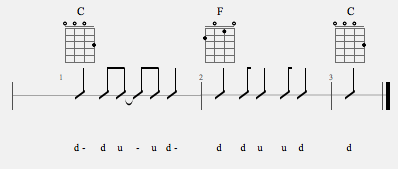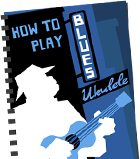The site is three years old today. I was originally going to do a review of the year but I decided to give that a post of its own and stick with the annual self-indulgent post.
Stats
The number of people visiting the blog continues to make me feel woozy whenever I think about it. The third year of the blog saw 2.1 million visitors and 10 million page views. There are over 3,500 subscribers. All of which are well up on last year’s stats which you can see in last year’s round-up.
And it looks like I might be heading back to the top of the ukulele site list.
A massive thanks to everyone who visits the site. And thanks in particular to everyone who gets invloved by commenting, emailing and mentioning the site around the net. Knowing that people appreciate the site and find it helpful really makes the difference when I feel like packing it in.
Visitors by Country
1. United States (more than all the others put together)
2. United Kingdom
3. Canada
4. France
5. Australia
6. Germany
7. New Zealand
8. Sweden
9. Japan
10. Ireland
Coming Up (Or Not)
Will Happen
More ebooks: I’ve been promising How to Play Classical Ukulele and How to Shred the F**k Out of a Ukulele for an age now. I had blocked out the Christmas break for writing How to Shred… but events took over.
In the spirit of getting things done, making commitments and scaring the crap out of myself, I’ll set the release dates:
How to Play Classical Ukulele – July 1st 2010
How to Shred the F**k Out of a Ukulele – November 3rd 2010
Feel free to kick me in the arse if I miss these.
Fewer Posts: Cutting down on the Monday posts hasn’t caused a single protest so I’ve decided to stop posting on Sunday as well (for now).
Might Happen
More Uke Hunt T-Shirts: The nightmare of finding a decent site to put the last batch of Uke Hunt t-shirts has made me hate the idea of t-shirts. But since the redesign I’ve had a lot of requests for them.
Taking How to Play Ragtime Ukulele off the market: I’m not sure if it’s up to the standards of the other ebooks any more.
Ukulele Applications: I’ve never bothered to properly learn any computery stuff. Along the way I’ve picked up enough HTML, CSS and PHP to break things but nowhere near enough to fix anything. So I’ve committed myself to learning these things (I might even tackle Ruby on Rails but only because I have a man-crush on David Heinemeier Hansson).
If I manage to get any good at PHP, I have a bunch of ideas for apps I want to make – most of the uke related. If any of them are actually any good, I’ll share them here. And if anyone has any advice on learning this stuff, let me know.
A Real Life Book: Not for the first time, there are talks of me working on a real life book. This one I’m really excited about. Although it’s very early days and, on past experience, it’s very unlikely to happen.
Definitely Won’t Happen (Probably)
EUkulele: I had a great idea: travel around Europe and meet a ukulele player in every country in the EU. Then I remembered I hate traveling, am terrible at meeting people and am organisationally incompetent. Idea ditched.
Sponsorship and Ads: I get offers for these but there’s no way. Mostly because I piss everyone off sooner or later. The one exception is the search page. Since the redesign I’ve been using Google Site Search because it’s far better than the usual WordPress site search. The down side is the ads. I could pay to have them taken off but, with it being a big site, it’s a pretty hefty cost. I don’t make any money off the ads myself, so don’t click them to do me a favour or anything like that.
If you want to sway me on any of these or you’ve got any good ideas for what I should be doing, let me know in the comments.








